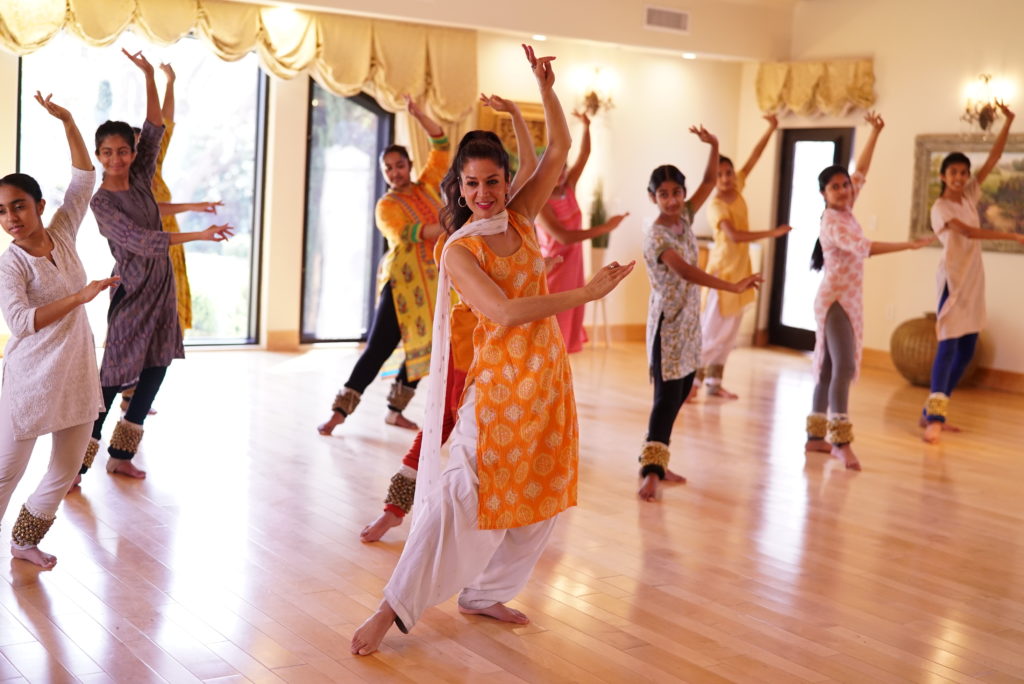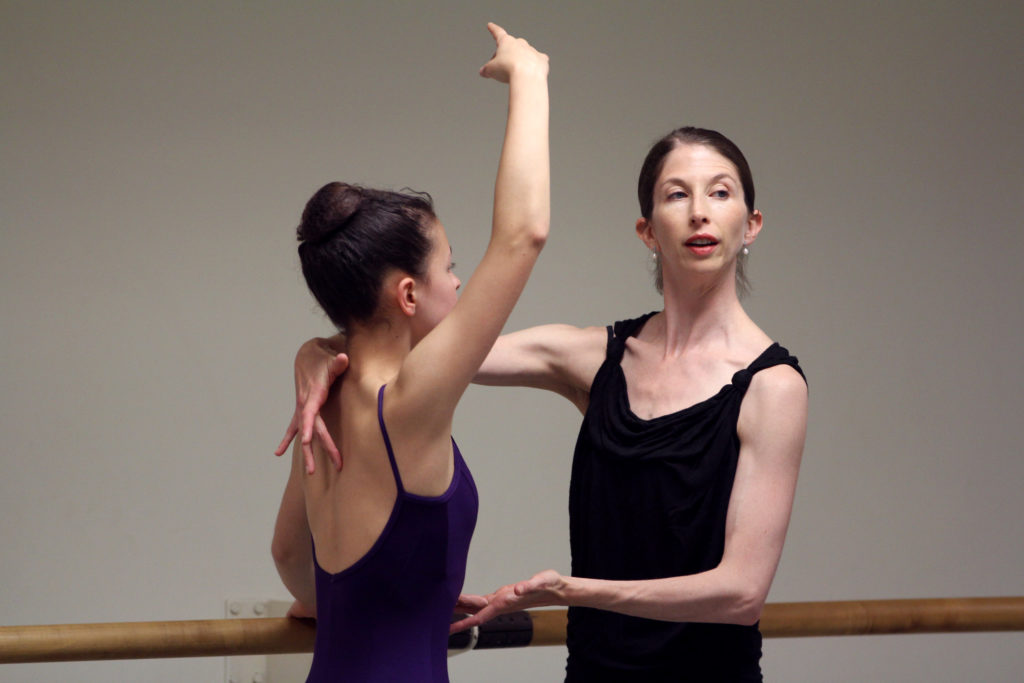
Spotting is as essential as it is difficult to teach. “You can certainly explain it, and you can certainly show it, but it has to come from within,” says kathak dancer and teacher Rachna Nivas.
Having a strong, confident spot is especially crucial for Nivas’ kathak students: Dancers in that classical Indian form turn on their heels, and can perform up to hundreds of quick turns at once.
Whether your students are doing one or one hundred turns, their spot is key to both efficiency and drama. Use these tips from Nivas and Pacific Northwest Ballet School faculty member Dana Hanson to help them attain this elusive skill.
Use the Eyes
Odds are, you’ve already taught your students the basics of spotting: The head should be the last to turn, holding the gaze to the front as long as possible, and the first to arrive once again at the front. You may have helped them understand this by asking them to look at their own face in the mirror and then snap their head around as they slowly walk around themselves, or by placing a mark on the wall for them to focus on.
But Nivas has another suggestion that emphasizes the need to not just whip the head around, but really focus the eyes after each revolution: When she was learning to spot, she’d write a phrase on a large piece of paper and read it every time she spotted. “If it was getting blurry, I knew I was losing the focus of my spot,” she says.

Keep It Simple
Hanson tells her students to think of a double pirouette as “a passé relevé with two spots.” The spot should anchor the turn, she says—“It should feel like it’s the spot that’s making it happen, and not a lot of force.”
This means ensuring students keep their weight forward as they prepare—being too far back can create tension in the neck, which makes spotting more difficult—and that they avoid swinging the arm around as they take off. Encouraging them to keep their spot even and rhythmic is also key: Hanson often sees dancers over-anticipating their turns when “it should almost feel like you’re going to be late,” she says.
Empower Fearlessness
There’s an element of fear that can come with spotting, points out Nivas. “Your nervous system is like, ‘What are you doing?’” she says. Plus, a solid spot requires an “unapologetic focus,” she says, which may be challenging for dancers used to wandering around the studio with their eyes looking to you for guidance or reassurance. “If you’re trying to turn and you’re looking at me for approval every time, you’re not spotting,” she says.
Teaching students to spot with confidence won’t just help them with more efficient turns. Hanson sees it as a way of creating a sense of connection and conversation with the audience, and of “making the movement read really clearly to the front.”
A brisk spot can also add drama and excitement: “A double pirouette can be a virtuoso turn if it looks like it comes out of nowhere,” says Hanson. “And the spot is an important part of that,” especially when the preparation for the turn is towards the corner but then the dancer, seemingly all of a sudden, is spotting front. “The spot creates that illusion of ‘How did they get from that to that?’” Hanson says.

The Power of Spotting
Spotting may seem like a hyper-specific skill, useful only when turning. But both Nivas and Hanson argue that investing in your students’ spot can enhance their dancing even when they’re not mid-revolution.
Hanson says learning to spot helps dancers develop their focus overall, which is especially useful when choreography requires quick directional changes. Spotting can also teach dancers to strike the balance between filtering out distractions and maintaining awareness of what’s around them, says Nivas. After all, “if you’re seeing something at the back of the room, you’re not spotting,” she says, but dancers also need to ensure they’re not going to run into someone, or drift into an area where they shouldn’t be.
“There’s such a level of control you end up having when you’re a really good spotter, even if you’re not turning,” says Nivas. “Because spotting teaches you that piercing focus. It’s so internal and so individual—it’s truly you owning your own body.”
Watch this video tutorial led by Nivas to help your students to achieve a strong and confident spot that is crucial for every dance style.





